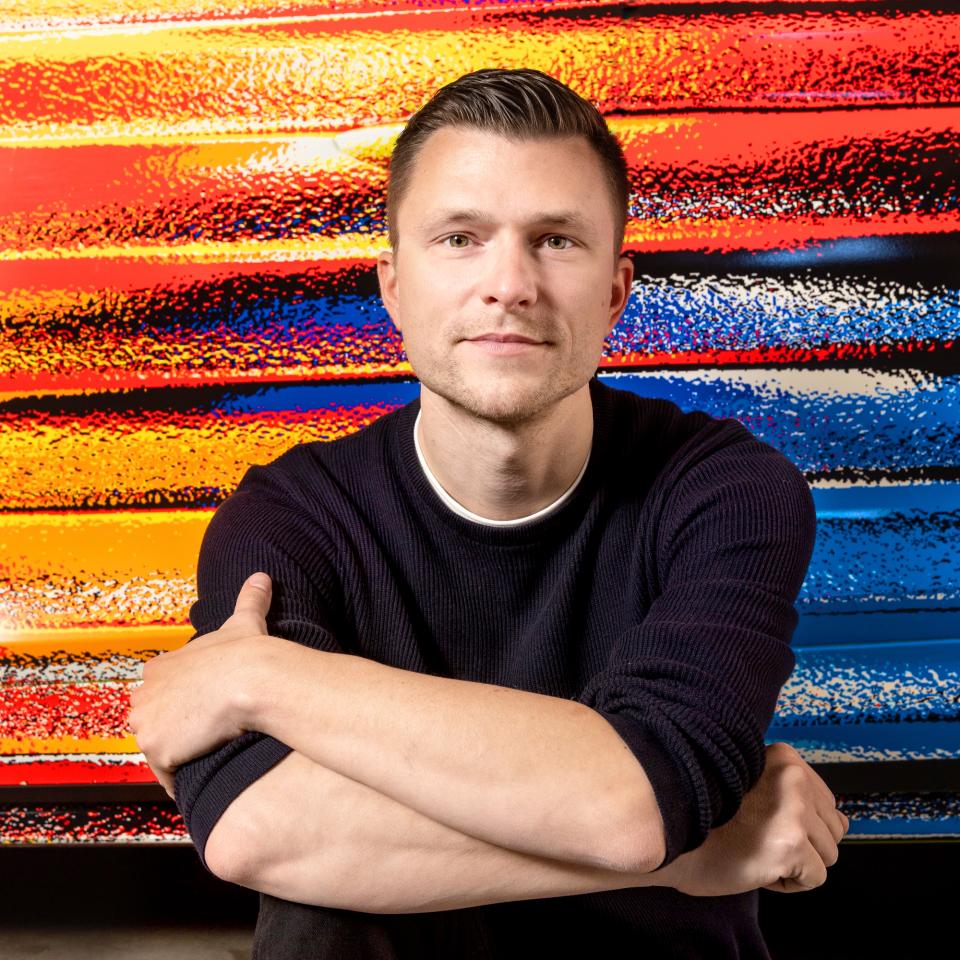The Belgian design scene is vast and diverse. Belgian institutions are always at the forefront of supporting the people, new projects and products that make our country dynamic and unique.
Managing Director and mastermind of the Keramis ceramics centre in la Louvière, a museum set in the former Boch frères pottery factory (1841-2011), art historian Ludovic Recchia discusses this medium that is rooted in walloon tradition, but also in the present.
When walking through your museum, there is an impression that you wanted to create an experience that is equally aesthetic and educational. Can you explain that?
The concept of the museum is to highlight the heritage of traditional local pottery. A collection with thousands of objects acquired in the 1980s during the first bankruptcy of Royal Boch, can be seen in the visible collection of Keramis, a classified building with four former charcoal kilns. We also display a series of modern and contemporary works of art, and we are working on building up a collection of design objects from the 19th century to today. We want to clearly highlight contemporary design through our thematic exhibitions. A distinct aspect of Keramis is that we don’t separate permanent and temporary collections, but instead enable dialogue between them. There is no break between our own collections, which we exhibit in rotation, and the exhibitions that we organise over time. As part of an exhibition dedicated to Chinese artists Bai Ming, I tried to create contact between his works and a selection of pieces from our collection.
The architecture of the museum – which I would describe as silent despite the power of the gesture – facilitates this valorisation of the object. The absence of display cases strengthens the sensory relationship that can be created with the exhibited objects.
The context of this valorisation is also at the heart of your project.
The overarching goal of Keramis is indeed to valorise this part of the artistic heritage of Belgium in the context of, not a museum of design, but rather a space dedicated to contemporary art. Although we are open to all techniques, the idea is to break the codes associated with pottery, by also opening up to other forms of expression, such as painting. The Bai Ming exhibition is nonetheless a first for the museum, because we are presenting his ceramics as well as his paintings.
Ceramic is a booming medium. How do you explain this popularity?
I believe it comes down to the search in society today for reference points. After so many years dominated by conceptual art, we feel a need to return to the material. The concept of the craft is again central. We can see proof in the public’s interest for other materials such as glass and tapestry, which are equally being revalued.
At Keramis, the idea of transmission is also at the heart of your project, both as a conservator and curator of your exhibits.
Through artists residences and courses open to the public – those for families are always full – we want to reconnect people with a profession that was completely lost when the pottery closed. Our team includes two ceramicists – Claire Lizier and Olivia Mortier – who are in charge of the workshops, but who also support the artists in residence. For example, French painter Françoise Pétrovitch had no experience with the medium before coming to Keramis. The result of the work she carried out in La Louviere will be shown at the exhibition she will soon present at the BNF in Paris.
This year, Keramis is celebrating its fifth anniversary. How would you assess its accomplishments so far?
I am pleased that the museum is seen as a reference site for ceramics in Belgium. Originally, there was a discussion about limiting ourselves to Wallonian design, but we fought to enlarge the conversation by bringing past and present into dialogue, but also local, Belgian and international artists. Today, my goal is to find funding for creating new exhibits, but also to expand our collections, and who knows, even enlarge the workshop to be able to create bigger pieces within our collaborations with artists.






